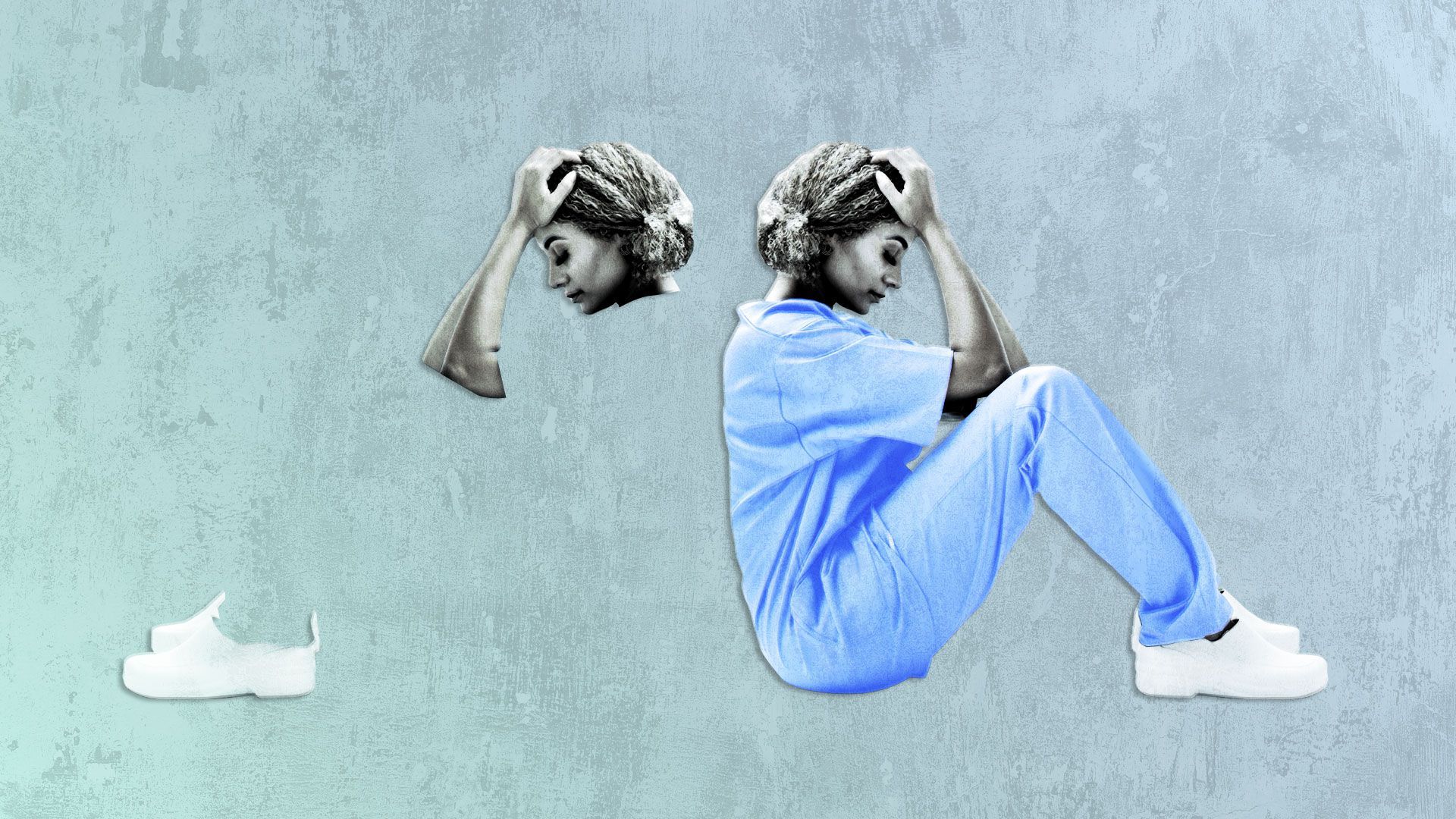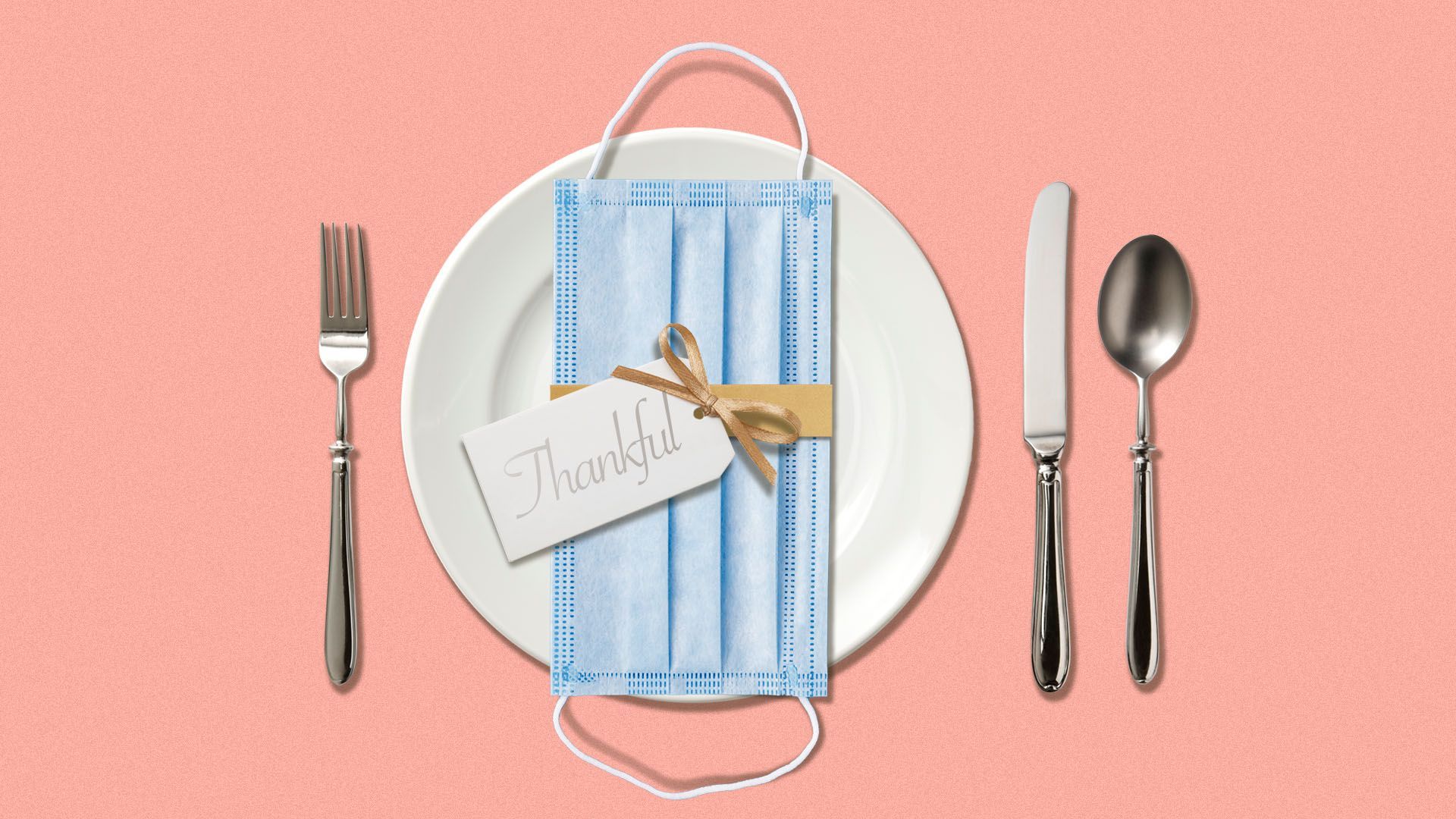| |
| |
| |
| Presented By UnitedHealth Group |
| |
| Vitals |
| By Sam Baker ·Nov 16, 2020 |
| Good morning ... How risky would an in-person Thanksgiving celebration be for you? This tool will help you quantify it. - Also: Join Axios Tuesday at 12:30pm ET for "Hard Truths," the second event in a series on systemic racism featuring National Education Association president Becky Pringle, Indigenous education advocate Rain Marshall, and EdBuild founder and CEO Rebecca Sibilia. Register here.
Today's word count: 764, or a 3-minute read. |
| |
| |
| 1 big thing: The rural wave |
 Data: CSSE Johns Hopkins University, National Center of Health Statistics, U.S. Census Bureau; Chart: Andrew Witherspoon/Axios This wave of coronavirus infections is hitting rural areas especially hard. While big cities have more total cases, rural areas are seeing more cases per capita — and they're at greater risk of running out of hospital capacity as cases pile up. Why it matters: What started as an urban problem in the spring is now everyone's problem. Between the lines: Rural communities in the U.S. have more vulnerable health care systems and more vulnerable populations. Many are on the verge of becoming overwhelmed by coronavirus patients as caseloads continue to grow. - Coronavirus patients occupy the highest portions of hospital beds in Midwestern and Mountain West states. And hospitalizations tend to trail cases by a few weeks, meaning the burden on hospitals is only likely to get worse.
- As the outbreak also continues to grow in big cities, rural systems may end up with nowhere to send patients after they run out of room to treat them.
- Health care workers are less likely to be able to temporarily relocate to hotspots, as they'll be needed in their own communities.
Zoom in: Childress County, Texas, has the highest per capita case rate in the country, with 91 cases per day in a county of just over 7,200 people — or 1,265.3 cases per 100,000 people. The bottom line: "We have legitimate reason to be very, very concerned about our health system at a national level," Lauren Sauer, an assistant professor of emergency medicine at Johns Hopkins University, told NPR. |
    |
| |
| |
| 2. Health care workers at a breaking point |
 |
|
| Illustration: Eniola Odetunde/Axios |
| |
| This sure feels like a crisis in the making: Health care workers are overworked, over-stressed and burned out — all as cases and hospitalizations keep climbing and climbing. "The wave hasn't even crashed down on us yet. It keeps rising and rising, and we're all running on fear. - "The health-care system in Iowa is going to collapse, no question," Eli Perencevich, an infectious disease doctor at the University of Iowa, told The Atlantic.
"People in leadership are starting to say things in meetings like, 'I have a sense of impending doom,'" Gregory Schmidt, associate chief medical officer at the University of Iowa Hospitals and Clinics, told ProPublica's Caroline Chen. In New York City, CityMD clinics will now close 90 minutes earlier than they have been. - "Our site staff and doctors have been seeing patients well beyond normal closing time for months now and we've reached the point where they are sacrificing their own safety and health," CityMD said in a statement.
"My mom, a nursing home administrator, just broke down crying. She went from zero to 45 cases in two weeks, the COVID unit's overflowing. She's had to inform families and take their anger & pain. She's had to be a nurse, a CNA and a housekeeper because all but 9 of her staff have it," HuffPost reporter Sanjana Karanth tweeted yesterday. The bottom line: Shortages of medical staff will have real consequences for the people who catch this virus, and the only way out of this bind is for fewer people to catch the virus. |
    |
| |
| |
| 3. Colleges grapple with Thanksgiving travel |
 |
|
| Illustration: Sarah Grillo/Axios |
| |
| Thanksgiving will be a big test for colleges with students on campus, Axios' Marisa Fernandez reports. The big picture: Some schools, including the University of South Carolina, Syracuse University and Emory University, plan to end in-person instruction ahead of the holiday, while others are asking students not to go home. Why it matters: Health officials fear indoor gatherings and traveling will worsen the spread of COVID-19 nationwide. If students do go home, experts recommend self-isolation, coronavirus tests and flu shots. Where it stands: Boston University is asking students to stay on campus and have a "friendsgiving." - The State University of New York system announced that its 140,000 students must test negative if they want to leave campus.
The other side: The University of Missouri has told students to go home until January. - Penn State's departure plan encourages students to get tested prior to leaving campus and finishing their studies online.
|
    |
| |
| |
| A message from UnitedHealth Group |
| Leading in the development of a next-generation health care system |
| |
 |
| |
| UnitedHealth Group is committed to leading in the development of a next-generation health system. That includes building on the high-quality, affordable health care that 24 million seniors receive through Medicare Advantage. Learn how we can build on Medicare Advantage's strength and success. |
| |
| |
| 4. Competition in the vaccine market |
| The coronavirus has sparked a new and highly competitive vaccine-development race, but competition in the sector had previously been declining for years, according to a report from the liberal Open Markets Institute, which was shared with me. By the numbers: The number of drug companies producing vaccines shrunk considerably in the '80s and '90s, according to the report, leaving just eight companies producing recommended childhood vaccines in 1996. - That number dwindled to just 4 manufacturers by 2002, when several childhood vaccines went into shortage.
The big picture: When the U.S. faced a shortage of flu vaccines in 2004, a big cash infusion from the federal government helped boost production. The billions of taxpayer dollars on offer now through Operation Warp Speed have once again helped jump-start vaccine work. - But it has lagged when federal money hasn't been there to prop it up.
|
    |
| |
| |
| 5. Catch up quick |
 |
|
| Illustration: Aïda Amer/Axios |
| |
| Michigan and Washington state imposed strict new lockdown measures to try to stem the rising tide of infections. (Washington Post) Where masks are mandatory. (Axios) The seven-day average for deaths is now about 1,100 (COVID Tracking Project) The pandemic has forced some medical practices to close. (New York Times) |
    |
| |
| |
| A message from UnitedHealth Group |
| Ensuring seniors have access to high-quality health care |
| |
 |
| |
| Medicare Advantage provides better clinical outcomes. Compared to original Medicare, Medicare Advantage results in 23% fewer hospital stays and 33% fewer emergency room visits. And seniors in Medicare Advantage spend 40% less than those in original Medicare. Learn more. |
| |








No comments:
Post a Comment